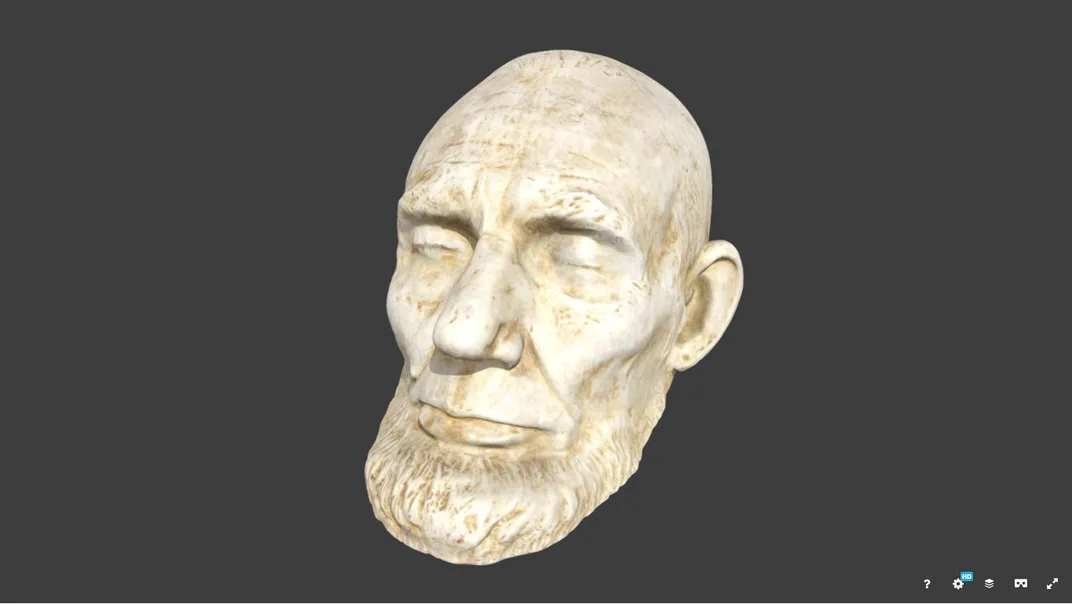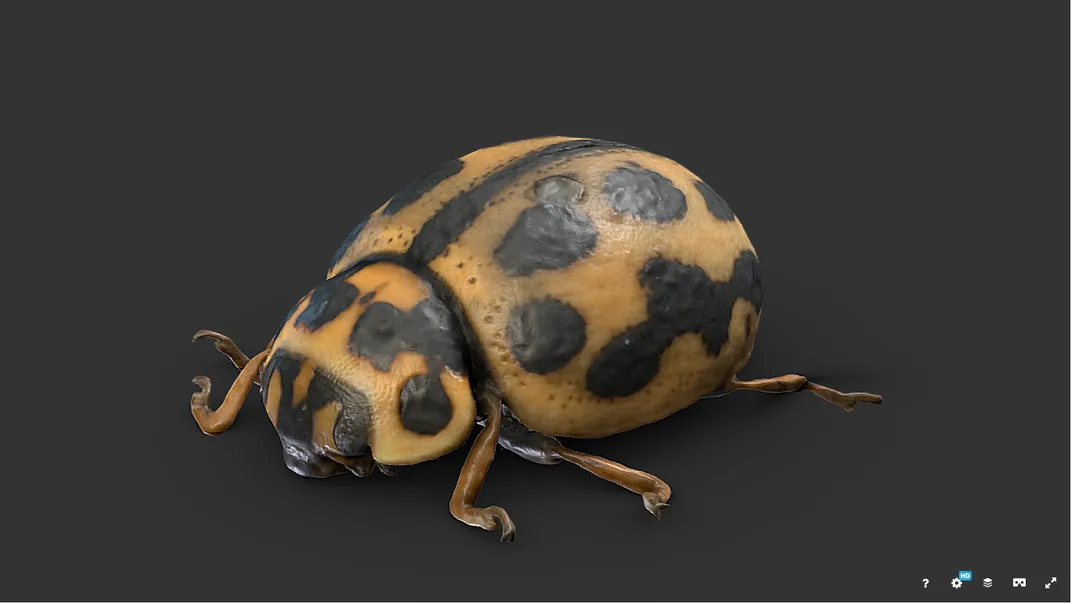You Can Now Download 1,700 Free 3-D Cultural Heritage Models
A new Sketchfab collection brings models of fossils, artwork and more into the public domain
/https://tf-cmsv2-smithsonianmag-media.s3.amazonaws.com/filer/09/43/09437df9-3bf7-4660-98c3-c383358e86e5/screen_shot_2020-03-02_at_100724_am.jpg)
During the first manned lunar landing mission in July 1969, Apollo 11’s crew lived in a command module dubbed the Columbia. Currently a priceless artifact in the National Air and Space Museum’s collections, the module was the only portion of the spacecraft to return to Earth. Now, thanks to a new open access initiative spearheaded by Sketchfab, the web’s largest platform for immersive 3-D content, anyone with an internet connection can “re-use, re-imagine and remix” the vessel—as well as nearly 1,700 other historic artifacts—without limitation.
Last week, Sketchfab announced plans to allow organizations to waive all copyright and dedicate their digital models to the public domain. To mark this milestone in museum digitization and accessibility efforts, the 3-D portal has released a new virtual collection of 1,700 models available for the public to download, print or manipulate however they see fit.
“With the introduction of the CC dedication for cultural heritage content, Sketchfab continues to foster ongoing artistic and academic reuse of [3-D] data under clear and easily understandable terms,” says Sketchfab founder and CEO Alban Denoyel in a statement quoted by Forbes. “With thousands of museums, libraries, art galleries, and archaeological projects already using Sketchfab to share their [3-D] data online, the platform wants to make it easy for organizations to align their digital [3-D] collections with their open access policies.”
Ranging from historic artifacts to fossils and works of art, the items featured in the collection have entered the public domain through a collaboration between Sketchfab, Creative Commons and 27 cultural organizations from 13 different countries, according to a blog post. Participating organizations include the Minneapolis Institute of Art, the National Gallery of Denmark, Spain’s Museus de Sitges and the Scottish Maritime Museum.
Among the objects released into the public domain is the Abraham Lincoln Mills life mask. The original mask, gifted to the Smithsonian Institution in 1889, was made by applying wet plaster to the president’s face and beard, reports Smithsonian magazine’s Meilan Solly.

Another selection from the collection is a scanned digital model of a ladybug, or Tytthaspis sedecimpunctata, housed at the Digital Archive of Natural History in Germany. As part of efforts to archive the planet’s biodiversity, the organization has developed a new digitization device that generates authentic textured and colored insect scans. Users can also browse a Tyrannosaurus rex skull from the Digital Atlas of Ancient Life; a Peacock table lamp from the Cleveland Museum of Art; and Kneeling Figure, a fourth century B.C. sculpture from the Minneapolis Institute of Art.
“We are especially happy to welcome the Smithsonian Institution to Sketchfab as part of this initiative,” reads Sketchfab’s announcement. “The Smithsonian has uploaded their first official [3-D] models to Sketchfab as part of their newly launched open access program.”

For the first time in the organization’s history, the Smithsonian has released a collection of 2.8 million images—featuring materials from 19 museums, nine research centers, libraries, archives and the National Zoo—into the public domain. Among this collection are 3-D models from the Institution’s extensive holdings, giving history, science and art enthusiasts an opportunity to recreate and hold their very own versions of rare objects.
“Being a relevant source for people who are learning around the world is key to our mission,” says Effie Kapsalis, the Smithsonian’s senior digital program officer, to Smithsonian magazine’s Katherine J. Wu. “We can’t imagine what people are going to do with the collections. We’re prepared to be surprised.”
With the array of 3-D models now available for public use, designers can easily incorporate historic artifacts into their projects and creative endeavors, writes Antonio Pacheco for Archinect. As long as users follow designated guidelines, they can download the files and freely transform them into new works of art. (Sketchfab outlines several starting ideas, including using a 3-D model in a school project, printing a high-resolution render on a T-shirt and 3-D printing your very own mini museum.)
According to Sketchfab, the new collection is simply the first wave of models released to the public. More will be added to the digital platform as the program continues to evolve.
/https://tf-cmsv2-smithsonianmag-media.s3.amazonaws.com/accounts/headshot/Image_from_iOS.jpg)
/https://tf-cmsv2-smithsonianmag-media.s3.amazonaws.com/accounts/headshot/Image_from_iOS.jpg)